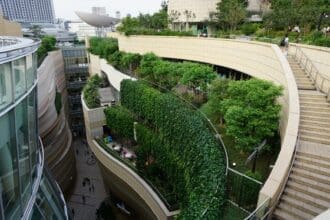The year 2025 is shaping up to be pivotal for Dubai’s property market. After years of unprecedented growth and large-scale transformations, the city faces a fundamental question: can the market truly absorb the massive volume of new housing units set to be completed? Analyzing data on population, capital inflow, and supply provides valuable insights for future investors.
Content
Population: Between Ambitious Forecasts and Conservative Reality
Official statistics indicate that Dubai’s population has already surpassed 4 million people. Government forecasts are exceptionally ambitious, expecting to attract 1 million new residents every four years, which would lead to a population of over 5 million by 2030.
However, more conservative analyses, based on an average annual growth rate of about 3.5% over the past three years, predict a population of around 4.6–4.7 million by 2030. While more moderate, this figure still represents impressive growth and is a clear indicator of stable housing demand. For a successful property investment in Dubai, understanding these demographic trends is paramount.
Millionaires: The Engine of the Luxury Segment
To date, Dubai is home to approximately 82,000 individuals with a net worth exceeding $1 million. These affluent individuals are the primary driving force behind demand in the luxury segment. According to reports like the Henley and Partners’ Millionaire Migration Report, their numbers are expected to double by 2030, reaching between 110,000 and 120,000 (or even 160,000 in more optimistic scenarios). This influx of capital is a key factor supporting the market for luxury villas, townhouses, and premium apartments.
Property Supply: What’s Coming by 2030?
Data analysis shows that the total supply of villas, townhouses, and mansions will reach approximately 142,000 units by 2030. It’s important to note that not all of these will be released onto the market for sale or rent. A significant portion of buyers, even in off-plan projects, are end-users relocating with their families.
Assuming that about 60% of these properties actually reach the active market, this translates to an available supply of roughly 85,000 units. At first glance, this number appears well-balanced against the projected number of affluent buyers (110,000–120,000).
The Big Question: Can the Market Absorb It All?
Although the balance between supply and demand appears healthy in theory, several significant risks exist in practice for the property market:
- Oversaturation in Certain Segments: The mass construction of uniform communities with thousands of nearly identical townhouses (so-called “cookie-cutter houses”) could lead to an oversupply and put pressure on prices in that specific segment.
- Competition Between Apartments and Villas: It must be considered that wealthy buyers do not solely invest in villas. A large portion of their capital is also directed towards luxury apartments, which reduces the share of demand allocated to houses.
- Varying Liquidity Speeds: Not all properties and projects are absorbed, appreciated, and resold at the same pace. The success of an investment depends on the market’s ability to “absorb” an asset, allow it to appreciate, and ultimately be liquidated at a profit.
Conclusion
The year 2025 presents new challenges for investors in Dubai. On paper, the market seems balanced- population, the number of millionaires, and supply are growing in relative sync. However, success will increasingly depend on detailed analysis and careful selection of a specific segment, project, and location.
In the coming years, three factors will be key to returns, which every investor must analyze: the potential for absorption, the capacity for appreciation, and the ease of liquidation. Those who understand where the true balance lies in a timely manner will be the winners in Dubai’s dynamic property market by 2030.
You might also like:
- Taxes on Selling Property in Greece: A Guide to Capital Gains Tax (2025)
- Property in Istanbul: High yield or unjustified risk?
- What documents you need to buy a property in Italy: a complete guide for foreigners
This post is also available in: Български







